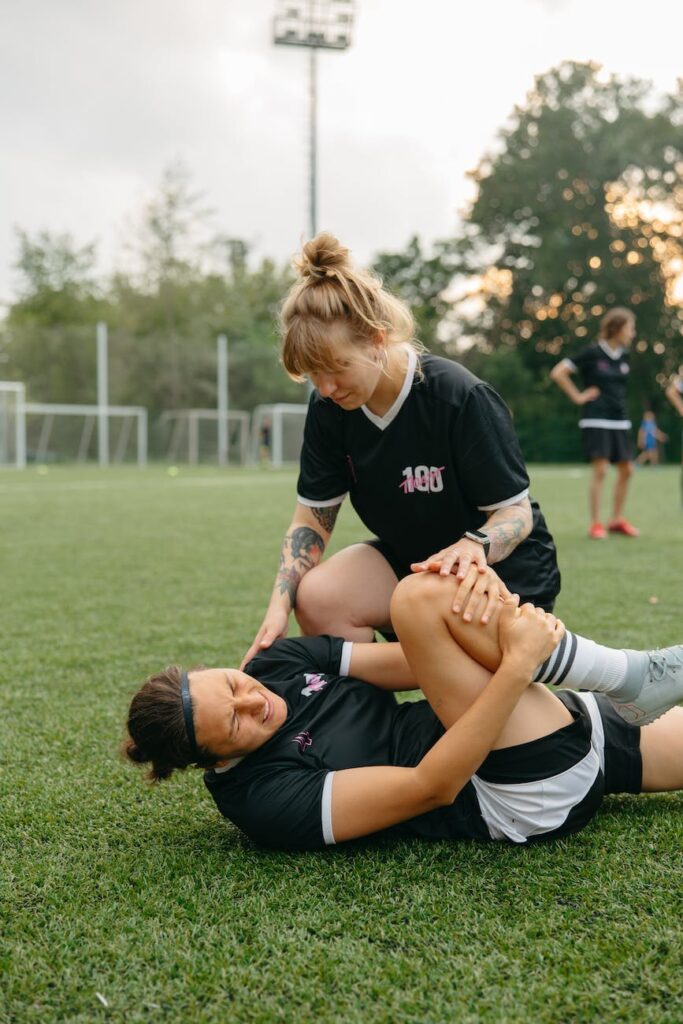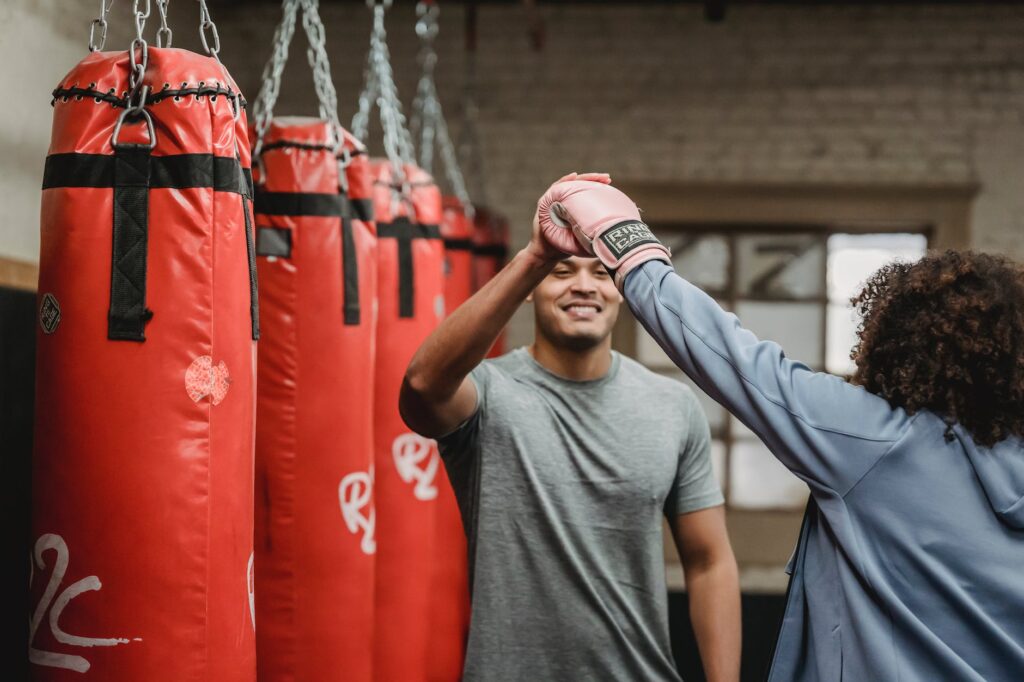Contents
Understanding Personal Injuries
Personal injuries, a critical area of focus in the legal and insurance sectors, can result from various causes and have significant implications for the individuals involved. Understanding the common causes and the legal implications of personal injuries helps to safeguard your rights and prepare for potential challenges.
Common Causes of Personal Injuries
Personal injuries can occur in nearly any setting and can result from a wide range of incidents. Some of the leading causes include:
- Automobile Accidents: These are the leading cause of personal injuries in the United States, involving cars, trucks, motorcycles, bicycles, and pedestrians. Causes include negligent driving, reckless driving, speeding, driver fatigue, impaired driving, inclement weather conditions, and unsafe roads, with some rare cases of health complications like seizures or heart attacks occurring behind the wheel. (Siegfried & Jensen)
- Construction Accidents: Injuries often occur due to defective equipment, falling sections of roofing or scaffolding, and other work-related accidents in the construction industry, one of the most dangerous professions worldwide. (Siegfried & Jensen)
- Medical Malpractice: Medical malpractice is a common cause of personal injuries in the United States, resulting in serious injuries when medical assistance fails to meet the standard of care. This can occur due to delays or failures in diagnosing conditions, improper doses or medications, and surgical errors. (Siegfried & Jensen)
- Dog Bites: Over 4.7 million dog bites occur annually in the US, leading to over 800,000 bites requiring medical care. Victims may be entitled to compensation for physical and emotional damages, including medical expenses and mental anguish. (Siegfried & Jensen)
- Premises Liability: This covers injuries sustained on another person or party’s property, such as slip-and-fall accidents from wet floors, torn carpets, or uneven floor coverings. Victims of dog attacks on someone else’s property may also be eligible to file a claim against the homeowner’s insurance policy for compensation. (Siegfried & Jensen)
For a detailed list of the most common personal injury claims, visit our page on most common personal injury claims.
Personal Injuries and Legal Implications
Personal injuries can have significant legal implications, specifically around the injured party’s rights to seek compensation. The legal process can be complex and often requires a thorough understanding of state-specific laws and regulations.
Compensation for personal injuries can cover medical expenses, loss of earnings, future loss of earnings, out-of-pocket expenses, and damages for pain and suffering. However, claiming compensation can be complex, involving negotiations with insurance companies, gathering evidence, and potentially going to court.
For those who have experienced personal injuries, it’s crucial to consult with a legal professional to understand the potential for a claim and the steps involved in the process. For more information on this process, visit our page on personal injury claims.
Personal injuries have the potential to cause significant disruption and distress. However, by understanding the common causes and legal implications, individuals can be better prepared to navigate the aftermath of an injury and take appropriate steps to protect their rights and well-being.
Preventing Personal Injuries at Home
Personal injuries can occur anywhere, but over half of all unintentional injuries happen in or around the home (Summa Health). Preventing personal injuries at home requires a proactive approach to minimizing fall risks, preventing burn injuries, and ensuring the safe handling of medications and chemicals.
Minimizing Fall Risks
Falls are a significant cause of unintentional injuries, resulting in approximately 424,000 deaths annually worldwide. Adults over 60 years old have the highest death rates from falls globally, with high morbidity rates seen in adults over 65 years, young adults aged 15-29 years, and children 15 years and younger.
To minimize fall risks at home, consider implementing measures such as:
- Installing handrails and safety bars in high-risk areas such as bathrooms and staircases.
- Ensuring adequate lighting in all areas of the home.
- Keeping pathways and floors clear of clutter.
- Using non-slip mats in the bathroom and kitchen.
- Regularly checking and replacing worn-out carpets or rugs.
Taking these precautions can significantly reduce the risk of falls at home and subsequent personal injury claims.
Preventing Burn Injuries
Burns can result from various sources such as dry heat (fire, irons, etc.), wet or moist heat (hot liquids), chemicals, electricity, and radiation, each causing different types of burns. They range from first-degree burns affecting the outer layer of skin, to the most severe third-degree burns affecting all skin layers and possibly internal organs below the skin (Lumen Learning).
To prevent burn injuries at home:
- Keep hot liquids and foods away from the edge of counters and tables.
- Use back burners and turn pot handles towards the back of the stove when cooking.
- Install smoke detectors and check them regularly to ensure they are functioning.
- Keep flammable objects away from heat sources.
- Always supervise children in the kitchen and around fireplaces or heaters.
These measures can help prevent burn injuries and the need for personal injury claims related to burns.
Safe Handling of Medications and Chemicals
Accidental exposure to medications and chemicals accounts for more than 90 percent of calls reported to poison control centers and is the leading cause of injury and deaths in homes (Summa Health).
To ensure safe handling of medications and chemicals:
- Always store medications and chemicals out of reach of children.
- Never leave medications or chemicals unattended.
- Ensure all medications and chemicals are clearly labeled.
- Dispose of unused or expired medications properly.
- Use child-resistant packaging for medications and chemicals.
By following these guidelines, you can significantly reduce the risk of accidental poisoning at home, thereby preventing personal injuries and subsequent personal injury claims.
Personal Injury Prevention at Work
Workplaces are common settings for personal injuries, often due to unsafe practices or environments. Understanding how to prevent these injuries is crucial for both employees and employers. A significant part of this involves ergonomics, the practice of designing workplaces to fit the people who work in them.
Importance of Ergonomics
Ergonomics plays a vital role in preventing personal injuries. Poor ergonomics at work is the cause of 34% of injuries, many of which can be avoided by implementing ergonomic solutions designed to prevent injury and increase employee comfort (Lista).
Moreover, musculoskeletal disorders, which account for 41% of all work-related illnesses reported, are often due to improper ergonomics. Implementing ergonomic workspaces and practices can significantly reduce the risk of these disorders (Lista).
Implementing Ergonomic Practices
Implementing ergonomic practices at work can increase productivity by up to 40% and reduce the number of errors by 88% (Lista).
Ergonomic practices can vary from simple changes, like adjusting chair and desk heights to match individual needs, to more comprehensive measures, such as investing in ergonomic equipment or redesigning workspaces to be more user-friendly.
Regular breaks and exercises can also prevent injury, as prolonged static postures can lead to musculoskeletal discomfort or injuries. Employers should encourage employees to take short breaks for stretching or changing postures.
Addressing Workplace Hazards
Addressing workplace hazards is a fundamental part of preventing personal injuries at work. This could involve regular safety audits, employee training, and maintaining a clean and organized workspace.
By properly implementing ergonomic practices, companies can see a decrease of up to 80% in absenteeism, which is a significant factor in maintaining productivity and reducing costs (Lista). Additionally, utilizing these solutions can reduce compensation costs related to musculoskeletal disorders by 65%, demonstrating the financial benefits of injury prevention through ergonomics (Lista).
In case of injuries, understanding your rights and the legal implications is critical. This includes knowing when to consult a personal injury lawyer, how to navigate the claims process, and being familiar with state-specific laws and regulations, whether you’re dealing with personal injury claims in California, Texas, Florida, or any other state.
Role of Physical Activity in Injury Prevention
Physical activity plays a crucial role in not just maintaining overall health but also in preventing personal injuries. Regular exercise can contribute to healthy aging by reducing the risk of chronic diseases, maintaining healthy bones and muscles, and improving balance and coordination, thus preventing falls and injuries (CDC).
Benefits of Regular Exercise
Regular physical activity can reduce the risk of many adverse health outcomes, including heart disease, some cancers, and type 2 diabetes. Moreover, it can lower the risk of falls and injuries from falls, which are common causes of personal injuries (CDC). Physical activity can also help maintain the ability to live independently and reduce the risk of falling and fracturing bones, particularly in older individuals.
Furthermore, both aerobic and muscle-strengthening activities can be beneficial for overall health. While aerobic exercise is good for cardiovascular health, muscle-strengthening activities can help improve balance, reduce the likelihood of falls, and prevent injuries (CDC).
Exercise and Injury Risk Reduction
One of the key factors in preventing personal injuries is the reduction of risk. Engaging in regular physical activity is a significant step in this direction. Adults should aim for at least 150 minutes of moderate-intensity exercise per week to gain substantial health benefits and further reduce the risk of certain chronic diseases and injuries (CDC).
However, it’s crucial to remember that while exercise is beneficial, it should be done correctly to avoid exercise-related injuries. Proper warm-ups, cool-downs, and using the correct technique for each exercise are essential.
For those who have previously experienced a personal injury, it’s particularly important to consult a healthcare professional before starting a new exercise regimen. They can provide tailored advice on the types of exercises that can help strengthen the body and reduce the risk of future injuries.
In conclusion, regular physical activity is vital in preventing personal injuries. It contributes to overall health and well-being and can also help reduce the risk of falls and other injuries. For more information on the legal aspects of personal injuries, check out our articles on personal injury claims and choosing the right personal injury lawyer.
Dealing with Personal Injuries
Despite our best efforts in preventing personal injuries, accidents do happen. It’s crucial to know the steps to take after an injury, as well as how to navigate the claims process, to ensure your rights are protected and you receive the compensation you deserve.
Steps to Take After an Injury
The moments following an injury can be confusing and stressful. However, the actions taken during this time can significantly impact the outcome of a future personal injury claim.
- Seek Immediate Medical Attention: Your health is the priority. Even if you think the injury is minor, it’s essential to get checked by a healthcare professional. Some injuries may not show symptoms immediately but could lead to complications later.
- Report the Incident: Notify the relevant authorities or parties about the incident. If you’re at work, inform your employer. If it’s a car accident, call the police.
- Document Everything: Keep a record of all the details related to the incident. This includes photographs of the injury and the accident scene, witness statements, and any other relevant information. Also, record your medical appointments, treatments, and expenses.
- Avoid Discussing the Incident: Be cautious about discussing the incident with anyone other than your lawyer, especially insurance adjusters. Do not admit fault or make any statements that could be used against you.
- Consult a Personal Injury Lawyer: A lawyer can guide you through the complex process of launching a personal injury claim. They can advise you on your rights, negotiate with insurance companies on your behalf, and represent you in court if necessary. You can learn more about this in our guide on choosing the right personal injury lawyer.
The claims process for personal injuries can be complicated. It involves several steps, from filing the claim to negotiating a settlement or going to trial. Here’s a brief overview:
- Filing the Claim: This involves notifying the at-fault party’s insurance company about the accident and your intention to seek compensation. It’s advisable to do this with the guidance of a lawyer.
- Investigation: The insurance company will investigate the claim to determine liability and the extent of your injuries. They may request additional documentation or conduct interviews.
- Negotiation: If the insurance company accepts your claim, they will propose a settlement amount. Your lawyer can negotiate with them to secure fair compensation.
- Lawsuit: If the insurance company denies your claim or you cannot reach a settlement, you may choose to file a lawsuit. This process can be lengthy and complex, requiring the expertise of a personal injury lawyer.
Navigating the claims process can be daunting, especially when dealing with the aftermath of an injury. However, with the right support and guidance, you can successfully manage this process. For more information, refer to our detailed guide on personal injury claims.
The Role of Personal Injury Lawyers
Dealing with personal injuries can be a challenging process, both physically and emotionally. A personal injury lawyer can provide invaluable support and expertise in situations where the injury resulted from another party’s negligence.
When to Consult a Personal Injury Lawyer
Following a personal injury, it’s crucial to consider consulting a personal injury lawyer as soon as possible. This is particularly relevant if the injury resulted from an accident where another party may be at fault, such as a car accident, a slip and fall incident, or an injury caused by a defective product.
A lawyer can help you understand your rights, guide you through the process of filing a personal injury claim, and ensure you receive fair compensation for your injuries. They can also navigate complex legal processes and deal with insurance companies on your behalf.
In cases where long-term or permanently disabling injuries have occurred, a lawyer’s support is especially important. These cases often require a thorough analysis to determine the compensation needed for medical bills, lost wages, and other expenses.
Similarly, having a lawyer becomes essential if the insurance company refuses to settle in good faith. They can help you navigate the litigation process and advocate for your rights in court.
Choosing the Right Personal Injury Lawyer
Selecting the right personal injury lawyer is a critical step in ensuring a favorable outcome for your case. When looking at potential lawyers, consider their expertise in personal injury law and their experience handling cases similar to yours.
Look for a lawyer who has a track record of successful personal injury claims, as this can indicate their ability to advocate for their clients effectively. You can review case studies and legal precedents to understand a lawyer’s experience and success rates.
It’s also important to consider the lawyer’s reputation. Check online reviews, ask for references, and conduct an interview to gauge their professionalism, transparency, and dedication.
Additionally, consider the lawyer’s fee structure. Many personal injury lawyers work on a contingency basis, meaning they only get paid if they win your case. Ensure you understand this agreement’s details, including what percentage of your personal injury settlement they will take and what other costs you might be responsible for.
Lastly, consider the lawyer’s location. Personal injury laws can vary by state, so it’s beneficial to hire a lawyer familiar with the state-specific laws and regulations that apply to your case.
For further guidance on choosing a lawyer, refer to our article on choosing the right personal injury lawyer.
Personal injury lawyers are crucial in helping individuals navigate the complex legal landscape following an injury. By understanding when to consult a lawyer and how to choose the right one, you can take steps to ensure you receive the support and compensation you deserve.







